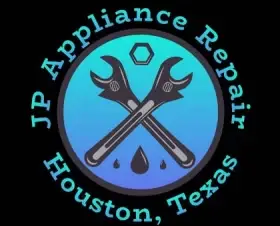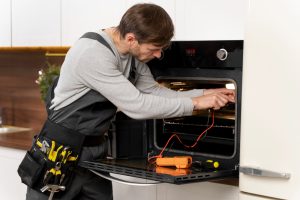So, you’ve finally bought those shiny new appliances—a sleek fridge, a double oven, or a smart dishwasher. Now what? Most people think installation is just about plugging in and turning on. But the reality? A proper installation involves much more, and sometimes, unexpected issues arise even after everything seems good to go.
This guide walks you through what to expect when installing new appliances, how to avoid post-installation errors, and when to call a professional appliance repair technician.
Common Issues That Might Arise After Installation
Even with a perfect setup, things can go wrong after the installers leave. Some new appliances might experience error codes, connection issues, or fail to function properly due to:
- Factory defects
- Improper wiring or plumbing
- Unnoticed shipping damage
- Power surges or incompatible outlets
- Error codes that delay function
- Water leaks from washers, fridges, or dishwashers
- Electrical faults due to ungrounded outlets
- Gas odor from improperly sealed oven connections
- Wi-Fi pairing failures in smart appliances
These problems may stem from manufacturer defects, misaligned connections, or user setup errors.
If your new appliances display error messages or fail to start, don’t panic. Contact a local repair expert like JP Appliance Repair for prompt diagnostics and repair.
JP Appliance Repair specializes in both appliance installations and post-installation repair services, ensuring your home stays running smoothly.
What to Expect When Installing New Appliances
Bringing home new appliances like a state-of-the-art refrigerator, a double oven, or a smart washer can be exciting. But what happens between delivery and actual use? Appliance installation is more than just unboxing and plugging in—it’s a meticulous process that demands preparation, technical knowledge, and often, professional support.
Even with a flawless installation, unexpected errors can arise post-installation, and many homeowners are caught off guard. Understanding what to expect—and what to do when things go wrong—can save you time, money, and a lot of frustration.
Preparing for the Arrival of New Appliances
Before your delivery truck arrives, you’ll want to prepare the space. Clear the area, check measurements, and ensure your home is ready for the installation team.
Checklist:
- Measure doorways, hallways, and the appliance space
- Check electrical and plumbing connections
- Remove old units and debris
- Ensure floors are protected (especially for large fridges or ovens)
Pro Tip: Don’t skip the prep. Most installation problems happen because homes aren’t ready—wrong outlet types, no water line, or tight corners that block proper placement.
Clearing the Path for a Smooth Appliance Setup
Delivering and installing new appliances can be obstructed by tight hallways, sharp corners, or cluttered entryways. Preparation ensures installation goes smoothly without unplanned detours.
If needed, remove doors or temporary barriers. Be sure pets and kids are safely out of the area.
What Happens During Installation?
Professional installers follow specific procedures depending on the appliance type:
- Refrigerators: Leveled to prevent coolant issues, water lines for ice makers connected, sealed doors checked.
- Ovens/Ranges: Gas connections tested for leaks, cords securely attached, burners or induction tops verified.
- Dishwashers: Water line and drain hooked up, test cycle run to check for leaks.
- Washers/Dryers: Hoses and vents installed, leveled, and power tested.
Expect the installation team to perform a quick functionality check before leaving.
Installing Refrigerators: Water Lines and Leveling
For refrigerators with ice makers and water dispensers, proper water line connection is essential. Leaks can occur if fittings are too loose or incompatible.
Installers will:
- Connect copper or braided hoses
- Secure fittings and insulate lines
- Test pressure and flow
- Level the fridge to ensure coolant flows correctly
Unlevel fridges often cause noisy operation or inefficient cooling.
Oven and Range Installation: Gas, Electric, and Safety Checks
Ovens require careful handling:
- Gas ovens need leak testing with soap solution
- Electric models demand proper voltage and grounding
- Installation teams must secure anti-tip brackets
- Smart ovens need Wi-Fi setup and calibration
Using an untested gas line? Always consult JP Oven Services before proceeding.
Dishwasher Installation: Plumbing and Drain Testing
Dishwasher installs often trigger issues due to improper drainage or backflow. Installers will:
- Connect the water inlet and drain hose
- Test for leaks during a full cycle
- Ensure the unit is level and properly secured
Washer and Dryer Installation: Vents and Balancing
Washers must be perfectly balanced to prevent movement during spin cycles. Installers will:
- Test washer hoses for leaks
- Adjust legs for floor leveling
- Check dryer venting for blockages or airflow issues
For gas dryers, a licensed gas technician should handle the hook-up.
Testing New Appliances After Setup
After your new appliances are installed, the technician should run a full functional test:
- Refrigerators are checked for cooling and ice production
- Ovens are preheated and timers tested
- Dishwashers run a full rinse cycle
- Washers and dryers are tested under light load conditions
Don’t rush to fill your appliance with groceries or laundry before this step is complete. Initial diagnostics may uncover issues early and save you headaches later.
What to Do if You Get a New Installation Error
If your appliance throws an error code shortly after installation, don’t panic:
- Refer to the manual to decode the error
- Check connections (water, power, gas)
- Restart the appliance if safe to do so
- Call JP Appliance Repair for diagnostics
Avoid DIY fixes, especially for smart appliances or anything involving gas or high voltage. You could worsen the problem—or void your warranty.
Why You Should Avoid DIY Appliance Repairs
Modern new appliances are more complex than ever. Circuit boards, digital interfaces, and proprietary sensors require specialized tools and training.
DIY attempts can:
- Void warranties
- Cause short circuits or fires
- Lead to water or gas leaks
- Create dangerous pressure build-ups in compressors
Only certified appliance technicians—like those at JP Appliance Repair—have the skills, tools, and manufacturer training needed to handle today’s advanced systems.
How JP Appliance Repair Handles New Appliance Issues
At JP Appliance Repair, we specialize in identifying and repairing issues related to brand-new appliance installations. Our technicians are trained across major brands like GE, Whirlpool, Samsung, LG, Bosch, and more.
We offer:
- Fast, same-day service in most areas
- Transparent pricing and written estimates
- Smart appliance diagnostics
- Repairs that preserve your warranty
Our goal is to get your appliance back in working order fast, with minimal disruption to your home.
Understanding Error Codes in Smart Appliances
Brands now equip their appliances with diagnostics tools that display error codes. These might include:
- E1 – Water supply issue (dishwasher/washing machine)
- F3 – Oven sensor fault
- 5C – Drainage issue (Samsung washers)
- LE – Motor locked (LG washers)
If your new unit displays any of these, contact us immediately. JP Appliance Repair can diagnose and reset systems without risking further damage.
How Installation Affects Your Appliance Warranty
Most manufacturers require professional installation to keep your warranty valid. If you install the unit yourself or hire an uncertified technician, your coverage may be void.
Always:
- Keep installation receipts
- Register the product online
- Schedule regular maintenance with certified providers
When to Call JP Appliance Repair for Help
If your newly installed unit:
- Makes odd noises
- Leaks water
- Displays persistent error codes
- Doesn’t start despite power
…it’s time to contact the pros. JP Appliance Repair can troubleshoot and fix the issue before it escalates.
Extending the Life of New Appliances
Proper use is just the beginning. Here’s how to maximize lifespan:
| Appliance | Tip |
|---|---|
| Refrigerator | Don’t overload or block air vents |
| Oven | Avoid using foil on racks—can block heat flow |
| Washer | Balance loads and avoid overstuffing |
| Dryer | Clean lint trap after every cycle |
| Dishwasher | Run hot water before starting to improve efficiency |
How to Optimize New Appliances for Energy Savings
Modern appliances are energy-efficient, but usage habits matter:
- Use cold water settings on washers
- Avoid pre-rinsing dishes
- Set fridges between 37–40°F and freezers at 0°F
- Turn off “heated dry” on dishwashers
Safety Considerations for Newly Installed Appliances
- Secure all cords and hoses to prevent trips
- Keep appliance manuals handy for emergency codes
- Install CO detectors near gas appliances
Professional vs DIY Appliance Installation
Cost Expectations: Installation vs. Post-Repair
- Basic installation: $100–$250 per appliance
- Smart appliance install: $200–$400+
- Post-installation repair: $90–$300, depending on issue
Investing in proper installation can prevent costly future repairs.
Real Issues After New Appliance Installations
We’ve helped customers fix:
- Fridge water line floods from poor installation
- Dryer fires caused by improper venting
- Smart oven errors from uncalibrated sensors
- Washer imbalance due to uneven floors
Why Local Appliance Repair Services Matter
When you’re dealing with new appliances, fast service is crucial. A local provider like JP Appliance Repair offers:
- Quicker response times
- Personalized customer support
- In-depth knowledge of regional regulations
- On-site troubleshooting in a single visit
Why “New Appliances” Shouldn’t Mean New Problems
Buying new appliances should bring convenience—not complications. With the right preparation, professional help, and expert repair services, you can enjoy peace of mind knowing your investment is protected.
Maintenance Tips to Prevent Early Breakdowns
To extend the life of your new appliances, follow a few easy maintenance tips:
- Run self-cleaning cycles regularly on ovens and dishwashers
- Keep refrigerator coils clean and unobstructed
- Check water filters and hoses every 3–6 months
- Don’t overload washing machines or dryers
- Keep appliance manuals and refer to them for error codes
FAQs on Installing and Repairing New Appliances
Do I really need a professional to install my new appliances?
Yes, especially for gas or smart appliances. It protects your warranty and ensures safety.
What if my new appliance shows an error code right away?
Call JP Appliance Repair. Error codes often need resetting or part replacement.
Can JP Appliance Repair fix new appliances still under warranty?
Yes, and we ensure your warranty remains valid by using certified parts and procedures.
How soon after installation can I use my appliances?
Usually immediately, once full tests are passed—but always wait for the technician’s approval.
What are the most common post-installation issues?
Leaky hoses, power surges, sensor errors, and drainage failures.
Should I register my appliance for warranty?
Absolutely. Most manufacturers offer extended coverage if you register online.
Final Thoughts on Installing New Appliances
Installing new appliances marks a fresh chapter for your home—but it comes with responsibilities. From prepping your space to handling post-installation errors, knowledge is your best defense.
For expert help with appliance installation or repair in your area, trust the experienced techs at JP Appliance Repair.


